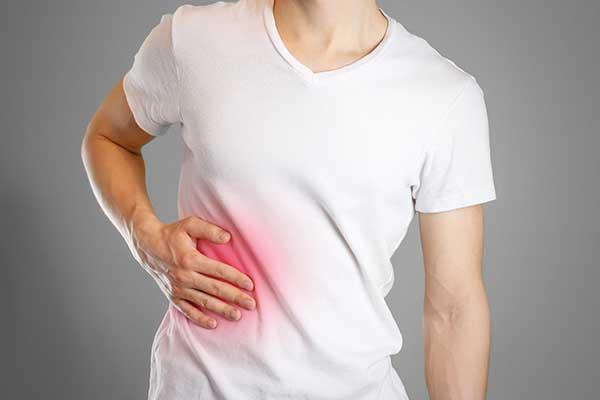Abdominal Pain

Having Abdominal Pain? When to Seek Emergency Room Treatment
SkiptheWaitBook an Appointment Today
What is Abdominal Pain?
Abdominal pain, also known as belly ache, is any pain you feel anywhere between your chest and pelvic areas. The pain may feel sharp, achy, dull or it may feel like cramps. It could be classified as severe, acute or extreme.
Conditions That Require ER Visit
Not sure what to do if you have abdominal pain? Would you know when it is time to visit an emergency center or if your abdominal pain is an emergency? Some pain may go away without treatment, but there are instances when you are experiencing severe abdominal pain.
If you have the following abdominal pain symptoms, It is time to visit the closest emergency room.
- Fever greater than 101
- Nausea and vomiting
- Trouble breathing
- Blood in your stool
- Swelling in the area of pain
- Loss of appetite
- Weight loss
- Constipation
- Painful urination
- Pain that lasts more than 24 hours
Severe Abdominal Pain Diagnosis
Medical doctors including emergency room physicians diagnose pain using various tools and methods. Below are some of those tools and methods.
1. Abdominal X-ray
This procedure uses an x-ray machine to provide doctors with images of the intestines, spleen, stomach and other organs in the abdominal cavity. It may identify an intestinal blockage, kidney stones or other causes of your pain or nausea.
The procedure: laying on a table or standing at the x-ray machine captures images of the abdominal area.
2. Abdominal CT Scan
This scan is similar to an x-ray, but it uses multiple rays in order to create cross-sectional images of organs and tissues in the abdomen. These images will allow us to identify any swelling, masses, infections or other issues that could be contributing to your pain.
The procedure: In order to receive these images, you will lay on a table that slides into the CT machine.
3. Magnetic Resonance Cholangiopancreatography
MRCP helps identify gallstones through the use of magnetic resonance imaging. The scan can also provide information about the liver, pancreas and bile ducts.
The procedure: laying on a table that will is moved into an MRI tunnel, which is where the equipment will gather images.
4. Abdominal ultrasound
Ultrasounds to help us check for liver disease, abdominal aortic aneurysms, and issues with other abdominal organs. These ultrasounds are often performed quickly and can give us immediate images that may help make a diagnosis.
The procedure: A small amount of gel is applied to the abdomen, and then the abdomen is rubbed with a transducer that sends the images to a screen for us to view.
Learn more about the different types of abdominal pain and various causes of abdominal pain. Additional information is available here.
- Alcohol Withdrawal Detox
- Allergic Reaction
- Asthma
- Abdominal Pain
- Causes of Abdominal Pain
- Bronchitis
- Back Pain
- Burns
- Chest Pain
- Cuts & Lacerations
- Dental Emergency
- Dehydration
- Fractures
- Head Injuries
- Heatstroke
- HIV
- Insect Bites and Stings
- Influenza
- Multi-slice CT Scan
- Seizure – Causes, When to Go to ER
- Tetanus Shots
- Ultrasound Imaging Services
- Migraine
- Pneumonia
- Skin Rash
- Vomiting and Diarrhea




